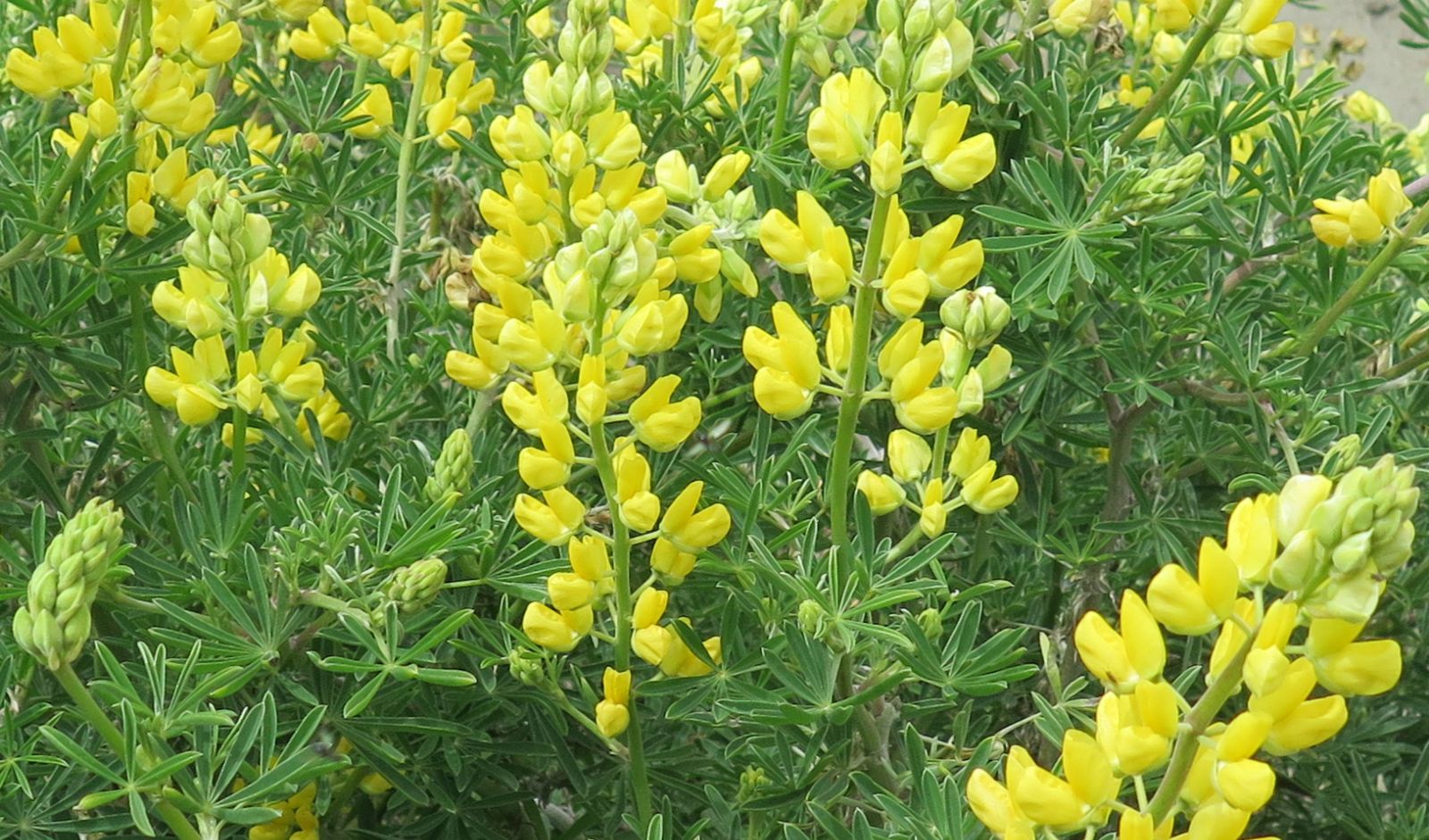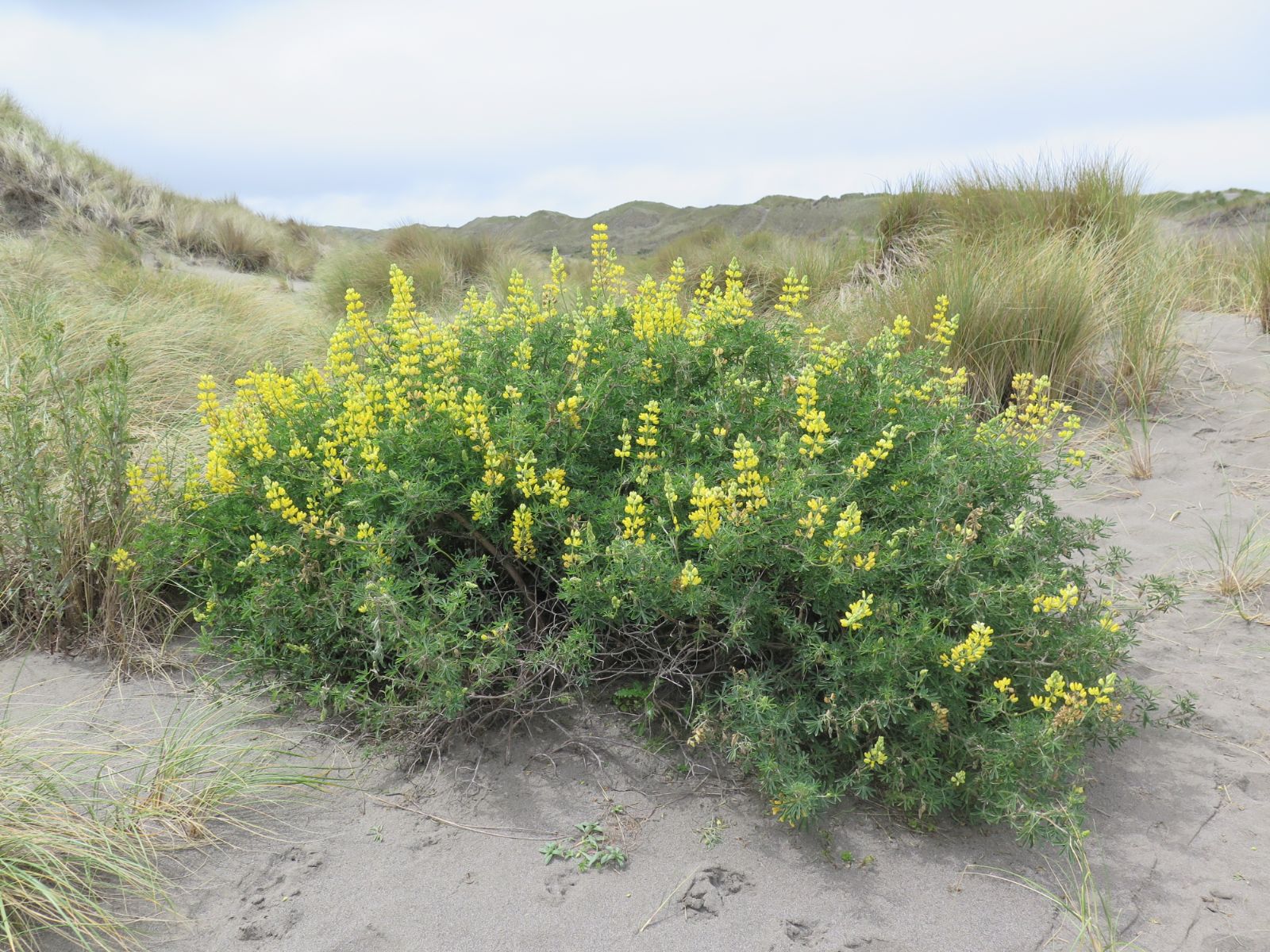Lupinus arboreus
Sponsor
Kindly sponsored by a member of the International Dendrology Society.
Credits
Julian Sutton (2023)
Recommended citation
Sutton, J. (2023), 'Lupinus arboreus' from the website Trees and Shrubs Online (treesandshrubsonline.
Genus
Common Names
- Tree Lupin
- Coastal Bush Lupine
Shrub, 1–2 m, green-glabrous to silvery-hairy. Stems ascending to erect. Leaves cauline; leaflets 5–12, 15–60 × 4–10 mm, linear-elliptic to oblanceolate, tips acute, usually apiculate; petioles (15–)20–40 mm; stipules 8–12 mm. Inflorescence 10–30 cm, flowers whorled or spirally arranged. Flowers 14–18 mm; calyx upper lip 5–9 mm, 2-toothed; lower lip 5–7 mm, entire; petals generally yellow, more rarely lilac to purple. Fruit 4–7 cm, hairy. (Sholars & Riggins 2022; OregonFlora 2023).
Distribution United States California, naturalized elsewhere on the Pacific coast, and around the world
Habitat Coastal sand and bluffs, sometimes further inland.
USDA Hardiness Zone 8b-9
RHS Hardiness Rating H4
Awards AGM
Conservation status Not evaluated (NE)
To most gardeners in our area this is the most familiar truly woody lupin. Fast growing, it makes a broad shrub with plenty of lightly scented, soft yellow flowers in summer, peaking June–July in Britain (Bean 1981). It is variably silver-hairy; hairier forms are arguably the more attractive. Plants with lilac, purple, or bicolored yellow/purple or white/blue flowers are known but have proved less popular in cultivation. A plant of nutrient-poor, open, sandy habitats, it suits full sun on well-drained soils, and should not be expected to live for many years. Good for naturalizing on banks, it also suits new plantings, where it quickly and attractively fills space before slower-growing species make their presence felt. The common name Tree Lupin, like Sims’s (1803) specific epithet, is absolutely inappropriate. It is never even a large shrub, while truly tree-forming Lupinus species from the Andes are unknown and probably ungrowable in our area.
Lupinus arboreus is an invasive species. It is probably truly native only to the Californian coast from the Bay Area southwards (Pickart 2000). It has been introduced further north as part of ill-advised dune stabilization projects in areas which have no native woody dune species, along with European plants such as Broom (Cytisus scoparius) and Marram Grass (Ammophila arenaria). With its shrubby form and ability to fix nitrogen, it reduces the mobility of dunes and accelerates succession. Pulling and digging have been used in attempts to control it. It can resprout after fire, and has a long-lived buried seed bank (Pickart 2000). It is now naturalized up the Pacific coast well into southern Canada, and inland along roads. It is also naturalized on the coasts of southern South America, southeastern Australia, New Zealand, Britain and Ireland (Royal Botanic Gardens, Kew 2023).
The Tree Lupin probably reached Europe in the late 18th century, apparently quite a novelty when Sims (1803) described and named it from cultivation in England, where it was first grown as a greenhouse plant of unknown origin. Edwards & Marshall (2019) note a record from 1793; certainly, George Vancouver’s expedition made an early European visit to San Francisco Bay in 1792. By the late 19th century it was well established as a ‘precious plant for dry soils and rough rocky banks’, with ‘handsome forms’ being propagated by cuttings (Robinson 1898). Bean (1981) suggests these should be short side shoots with a heel in July or August, with gentle heat. A range of colour forms is maintained in the British nursery trade this way, sometimes under cultivar names which mostly come and go over the years, sometimes labelled simply with their colour.
Although a familiar native plant, L. arboreus is sometimes offered by Californian nurseries.
'Snow Queen'
Flowers white; propagated by cuttings. Selected by Ladhams’s nursery, Southampton, before 1899 (Bean 1981); still grown today.



